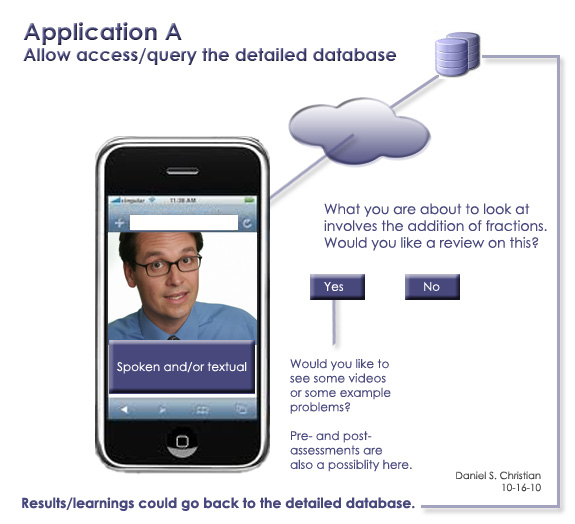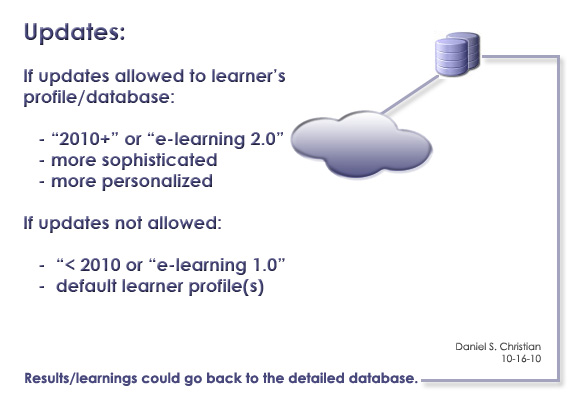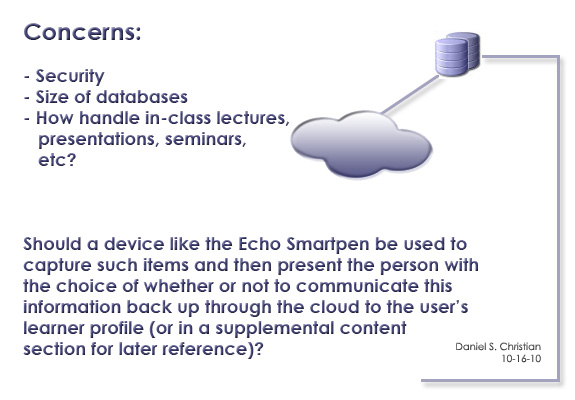
.

.

.

Part I: New Learning Frameworks
Part II: Under30 Perspectives
Part III: Learning in Action
Part IV: Learning Changes
From Elliott Masie:
We are pleased to announce a free, Open-Source, eBook for and by Learning Professionals:
“Learning Perspectives: 2010” | Contributions by 40 Global Learning Leaders | http://www.learning2010.com/ebook
The articles in this eBook cover the wide range of viewpoints and perspectives on the changing nature of Learning. It includes articles from our 30 Under 30 Learning Leaders. Contributors from Google, Intel, Lockheed Martin, Accenture, Alliance Pipeline, Farmers Insurance, Veterans Administration, Cleveland Clinic, CNN, Liberty Mutual, CIA, Luxotica and many more.
“Learning Perspectives: 2010” is published by The MASIE Center as an Open Source ebook and will also be distributed in hard copy format to every attendee at the upcoming Learning 2010 event to be held in Orlando, starting on October 24th. Note: “Last Minute” Registration Rates available for Learning 2010 – http://www.learning2010.com
Download your copy of “Learning Perspectives: 2010” at http://www.learning2010.com/ebook
Moving to eLearning — from the Upside learning Solutions Blog by Abhijit Kadle
Our customers account for a number of factors before taking the plunge into e-Learning. I was trying to put together some of the key change factors leading organizations to adopt e-learning stand-alone and as a part of the training blend. I arrived at these factors driving the change:
1. Business Strategy
2. Geographical Expansion Of Business
3. New Business Opportunities (which may lead to new skill development)
4. Cost and Benefits
5. Organizational Culture/Demographics
6. Infrastructural Readiness
7. Management SupportSome of these change factors translate to simply ‘business needs’ which fuel the need for e-learning in the business. Without the appropriate need or a real business case for e-Learning, it may seem like another fad.
E-learning will have to specifically contribute to increasing revenue, reducing costs, and increasing efficiencies (by means of skill building).
Learning TRENDS by Elliott Masie – Sept 28, 2010.
#639 – Updates on Learning, Business & Technology.
1. Undercover Boss: TV Lessons in Training:
I never would have guessed that a “reality show” would be a weekly lesson in Training, Learning and Development. Undercover Boss, a show on CBS, takes a CEO of a company and sends them undercover in their own organizations, working a range of jobs, to get a new view of the culture and operational experience on the frontline. CEO’s of organizations including Choice Hotels, Waste Management and other organizations have had some eye openers as their worked manual and entry level jobs – without their identities being known to their new peers. Cameras follow their experiences, using cover stories to explain the media presence. Each show has ended up focusing on learning and training issues including:* Online learning offered by headquarters but not supported by first line managers.
* Procedures and processes being confusing and often contradictory on the front line.
* Acceptance of inappropriate manager behaviors and poor role modeling.
* Inadequate training skills around the organizations.
* Poor identification of rising talent potential from entry level employees.A number of the episodes are viewable online at http://www.cbs.com/primetime/undercover_boss/
2. Complete Learning Program Guide Published!
I am very proud to present the complete Program Guide for Learning 2010 – including session and learning activity descriptions of 203 sessions, presented by 254 faculty from global companies. Download this at http://www.learning2010.com/guide Note: Hotel rooms are going quickly and we have over 1,416 participants registered already!Yours in learning,
Elliott Masie
How long does it take to create learning? (2010 Research) — from Brandan-Hall.com by Bryan Chapman
.
From DSC:
I have it that in the near future, it will take a team of specialists to create and deliver effective learning content that is able to engage folks (the for-profits, as we’ve seen, are already doing this). No doubt this takes time and money. That is why, within the world of higher ed, I think the use of pooling resources and expanding the use of consortiums might take off; and/or…perhaps there will be more contributions to open source alternatives…I’m not sure. But this report shows that it can take a significant amount of time to create the content.
The important thing for the online world here is to leverage these efforts again and again and again. The more times that a course is used/taken, the ROI goes up and the cost per delivery goes down.
In search of pioneering learning architects — Clive Sheperd
Meet the learning architect
A learning architect designs environments for learning. Like the architect who designs buildings, the learning architect will be responding to a specific brief:
The learning architect also has a professional responsibility to their client. This requires them to be fully conversant with current thinking in terms of learning methods, acquainted with the latest learning media and up-to-date with developments in the science of learning. As none of these is intuitive and obvious, the client cannot be expected to have this expertise. And for this reason, it is neither sufficient nor excusable for the learning architect to act as order taker.
…
The learning architect does not need to directly facilitate learning or be present in all those situations in which learning might be taking place. However, they must know whether or not the learning that is occurring is in line with their plans and their client’s requirements, and that all this is happening at an acceptable speed and cost. And because the only constant in the modern workplace is change, they must be agile enough to respond to shifting requirements, new pressures and emerging opportunities.
From DSC:
I like this metaphor…it reminds me of a graphic that I developed a while back:
Work is changing; is training changing too? — from The Upside Learning Solutions Blog by Amit Garg
John Hegel lll and John Seely Brown have written an article titled ‘Six Fundamental Shifts in the Way We Work’ on HBR blog. The article summarizes the ideas from their new book – The Power of Pull.
The six shifts they talk about:
…
Later on in the posting, Amit states:
I expect the future of training to be shaped sharply by the above listed trends and the advancements in learning technology itself. There is much for business leaders to focus on, and training is one of the important parts of the matrix. Training needs to call for a redefinition of its purpose, process, and structure. Mobile Learning and Social Learning will perhaps be the two biggest elements of an individual’s personal learning environment in the future and both of these only further emphasize the power of pull.
How to integrate multimedia for effective learning — from theelearningcoach.com

.
Integrating the multimedia assets of a course can raise a host of issues. In my world, this can be as simple as explaining to a client why screens of text with an out-of-sync voice over will not be effective—to more complex issues, such as determining whether an animation will promote greater comprehension than a series of stills.
Although we know it can be advantageous to present content through multiple forms of media, the big question is how to integrate the mediums.
When deciding on these issues, I use two principles from cognitive science as guidelines that I think you’ll find helpful too. One is known as the Split-attention Effect and the other is the Redundancy Principle. Both principles are important.
Also see:
Related Articles:
Using Graphics To Improve Learning
Learning Theory And Multimedia
Book Recommendation:
Multimedia Learning by Richard E. Mayer
30 under 30 — per Learning TRENDS by Elliott Masie – August 24, 2010.
#632 – Updates on Learning, Business & Technology.
55,106 Readers – http://www.masie.com – The MASIE Center
We have completed the assembly of the 30 Under 30 Learning Leadership Team for Learning 2010. We are proud to announce these high energy learning leaders (all under the age of 30) that will be leading sessions and helping to articulate a view of the future of learning. They include colleagues from Google, Verizon Wireless, Disney, Volkswagen, Farmers Insurance, General Mills, FM Global, IBM, Westinghouse and many more. Check out their aspirations about learning.
Upcoming “Distinguished Lecture Series” from Wimba
Top 70 eLearning Articles – Hot Topics: iPad Adobe Captivate – July 2010 — from elearninglearning.com by Tony Karrer
The following are the top items based on social signals…
Learning to change report — from Learning Conversations by Mark Berthelemy
“We’ve just published a research report, based on the opinions of senior decision makers among the UK’s largest 500 firms. Here are some of the findings.”
- The majority (70%) of business leaders fear that inadequate staff skills are the greatest threat to their ability to capitalise on the recovery.
- More than two thirds of business leaders admit that their under-trained workforce is struggling to cope with expanded job remits following waves of job cuts during recession.
- … as the economy moves out of the downturn, two fifths (40%) of leaders estimate that at least half of employee skills risk becoming obsolete.
- Over a third of leaders (36%) lack confidence that their employees have the skills required to deliver the firm’s upturn strategy, with close to half (46%) casting doubt on their L&D department’s ability to provide these learning services.
- Over half (55%) claim that their firm is failing to deliver the necessary training for recovery.
- Around half fear for their company’s ability to respond to surges in demand (51%), retrain and redeploy people where required (47%) and identify where current skills are becoming obsolete (49%).
- More than two thirds (67%) of business leaders are concerned their employees are struggling to cope with expanded remits following job cuts.
- More than half (52%) describe their L&D function as slow to respond to the changing requirements of their business during economic turbulence.
- As strategic objectives have evolved, close to half (46%) of senior managers report no significant change in the training delivery to their workforce. Going forward, almost as many (43%) expect no significant change to L&D delivery over the next 2-3 years.
- The vast majority (82%) of leaders lack confidence that their firm’s L&D strategy and delivery are aligned to the company’s operational strategy.
- Half (50%) believe that their L&D function is stuck in a ‘business as usual’ mindset.
Another interesting quote here:
“Perhaps L&D needs to rebrand – towards performance consulting… Often performance problems are more around culture, systems, processes and communication. Solve those, and you won’t need to provide training in a lot of cases.”